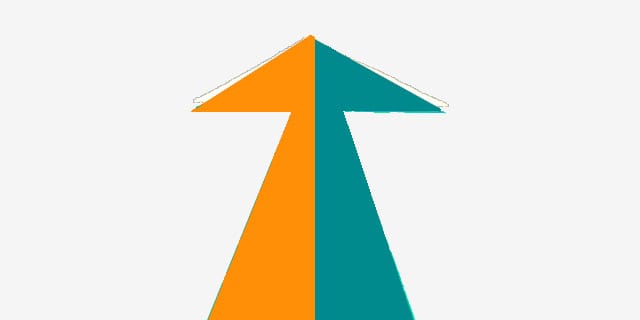About Changemaker The minimalists, Joshua & Ryan, help millions of people learn to live better…
Creating Richly Wills website was a portfolio case study in itself. Here’s what went into the process from the background, thought structure to the development.
When I was thinking about which examples of websites I’ve created and written content for to include in this portfolio I kept coming back to my own website, this one, Richly Wills (which houses Richly UXD).
The Background
The reason being is because it demonstrated a project that went from a completely blank canvas to a fully-fledged and pretty comprehensive website that was designed and coded from scratch and holds a responsive CMS blog, an ecommerce checkout element, a member area, a course and coaching structure, a portfolio, and a services area.
I’ve worked on other websites and content writing before, but since becoming an innovation and brand consultant a few years ago I’ve not really worked on much at all, so a few were a little outdated, some didn’t exist live anymore (such is the fast change in web design).
However, I’ve been working crazily on this website for the past 1-2 years, since the lockdown began. The lockdown provided an opportunity to have more time at home and cement more skills. I am certainly no advanced coder but I wanted to expand my horizons and also finally put together what was originally 5 different websites I created before into one.
The challenge was arguably the biggest I’ve ever faced in terms of web design simply because it was originally created by me, myself, and I. The 3 of us (the web designer, the content writer, and the (sleepy) SEO guy) banded together in an attempt to create a website that would both house my portfolio and services from my day job side of things (innovation, branding, UX stuff for clients), but also become a hub for helping people create change, originally in themselves but with the intent to create change in the world through developing their ‘yellow-thinking’ adaptable and innovative future-minded vision (to create a more sustainable world for humanity).


A bold aim, I know, but through my vast experience as a design thinking creative consultant I always found that the only thing blocking sustainable and effective self-innovation was how we tend to fall into conventions, usually at no fault of our own, and I didn’t see a website out there that would broadly help people, not just challenge their conventions, but lead into future-minded solution thinking (one that combines psychology and innovation), so I created it.
The Preparation (Working Out What The Website Is)
When faced with the prospect of taking 5 smaller sites that were a bit worn out themselves and about related, but different things, and turning it into a seamless site that would somehow work as one, I faced MANY blocks along the way. It’s still a challenge, a constant iteration when you are giving yourself such a huge project (there’s still A LOT more to come from this site over time).
It started out looking very different from what it does now but the process of getting to today’s version was a case of breaking down the main elements into easier-to-digest areas.
When you are creating a site that is multi-functional (e-commerce, blog, course, portfolio, and more) then you have to always start on paper and draw out many options and condense until you find a flow that works, but as an experienced UX/UI designer I know the importance of research and feedback, as well as wireframes and prototypes.
However, with this site, I made it a living prototype, one that I would test and learn along the way, simply because I could. With clients that would never happen. The testing would be condensed and done behind the scenes in staging environments before agreeing on updates and updating live.
I struggled a lot in working out how to bring 4 different topics of personal development, travel, design thinking, and sustainable innovation together. These were the areas I’d had a lot of previous experience and knowledge in, but with time I found that the connection is all there, in a process that really starts with challenging our minds to ‘get out the box’ of limited thinking and through doing so we can develop our more creative and innovative-leading mindset, as well as our will, to see and create solutions.


Then it was a case of figuring out how on earth a services side of the site would work considering the rest of the site wasn’t solely about design consulting services. It could potentially fit into the design thinking and sustainable innovation parts, but what about the other two?
It dawned on me that although design clients tend to want a DFY (done for you) approach to services there were also many people within personal and business avenues who would benefit from developing the design thinking skills that help us see things more clearly when we challenge ourselves to problem-solve form a new direction, and that many modern issues our world has are simply a form of limited convention within our outlook, often no fault of our own, which can hold back our creative potential.
the more I looked into it the more I realised that people wanted to bring out their creative potential but just didn’t know how, and through a lot of psychological study and search I found that our behaviours tend to be rooted to set paradigm shifts that are often blindly followed (spiral dynamic), and if we could see them more clearly and challenge our comfort zone more we could begin to shift that limitation and open up our potential.
The site was never intended to go so deep into the psychology of how we think as humans, but then I thought of how design principally works, through understanding human behaviour and then designing around that behaviour.
If we can challenge how we think we can also look at problems easier from a new direction and then be able to feed our vision to create the kind of sustainable and forward-thinking solutions we need in our world.
The coaching element was tricky to implement but I found it could be applied in two ways. One through Richly UXD and one through Richly Wills.


For those wanting DFY services, or specific coaching in design thinking techniques, then the Richly UXD side would be your services area, and for those wanting a more hands-on DIY approach to personal and human development then they could learn through the Richly Wills side that was dedicated to the psychology and training of human behaviour and challenging ourselves to think from a new direction, as well as act as an inspiring place to start getting involved in creating change as ‘Changemakers’.
The Process Of Creating Richly Wills (Web Design)
I have one major regret with building this site, and it’s not the numerous times I had to deal with coding fatal errors and fix all sorts of plugin conflicts, but it’s not recording or documenting the challenges and progress. It could have been a very useful Youtube tutorial series for people out there learning how to (and how not to) build a website from scratch.
That said, from this experience I’ve become a pretty accomplished web designer (and would like to think I was already a pretty decent writer – although, of course, that is always subjective).
Instead, I can simply comment on how building a website such as this requires a lot of willpower and a good amount of technical know-how, and that it’s a constant iterative process.
That process involved working out how to design the graphics and colour schemes (UI) throughout, how to code principally html, css and php, as well as considering the on page SEO issues including performance and security areas, finding suitable plugins and ensuring they can work seamlessly with each other, adding many conditional functions, making the site responsive to desktop, tablet and mobile, creating different widgets, sidebars and footers, ensuring the brand message of creating change’ is subtly carried through, linking content together to reach deeper into the site whilst maintaining a simple look, creating engaging content, finding ways the site could be future-proofed and monetised, debugging errors, connecting it to other relevant content, and ensuring the user experience is good throughout.
Suffice to say it’s a lot of work.
The Content Writing
As well the website being a demonstration of web design skills, it also holds a growing number of articles within the range of understanding how we think and are biased to what we can do to create sustainable innovations to solve problems in our world.
While it’s a way for me to document my thoughts and ideas, Richly Wills goes way beyond me and aims to help people understand and challenge their mindsets to bring out their potential.
There’s an array of articles from:
How To Stop Comparing Yourself To Others
Human Development Explains Why Peaceful Protests Lead To Angry Riots
8 Reasons Why You Should Treat Life Like A Video Game
5 Strong Reasons Why Now Is Time For The Smart Generalist Vs Specialist
Why You Shouldn’t Quit If Your Startup Idea Is Taken
Why You Should Be Creative With Others
Why Group Brainstorming Sessions Fail (5 Unorthodox Methods To Fix Them)
11 Social Innovation Shifts We Will Realistically See By 2030
and many more.
The SEO
Admittedly, most of what currently exists is on-page SEO on the Richly Wills website. Things like optimising page speed (considering the size of the site and the 50+ plugins this was quite a feat to get it under 2 seconds fully loaded times), ensuring security, and mobile friendliness (although mobile speed is still a work in progress).
With such an array of articles, and this project having a long term vision that isn’t as niched, but more broad like an online magazine, means that determining LSI keywords is a harder task. Over time the amouunt of lSI keywords will begin to come together to a more general collective brand understanding such as ‘personal development’ or ‘sustainable innovation’, but due to the complexity of developing a site with such an array of content then this simply takes time, and requires focus on other SEO areas.
For other sites I’ve worked on they were much more niched and therefore more simple to build LSI keyword content into, such as Drivestyle Autoservice Centre which is found in searches for a variety of sports cars around the whole North England area.
A Case Study From:











